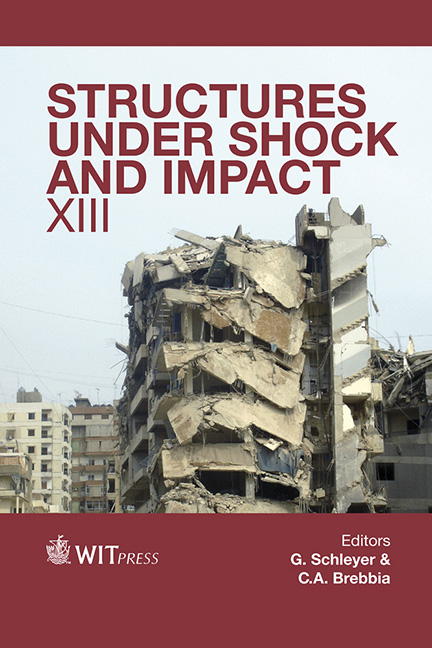Seismic Performance Of Double-unit Tunnel Form Building Under In-plane Lateral Cyclic Loading
Price
Free (open access)
Transaction
Volume
141
Pages
12
Published
2014
Size
898 kb
Paper DOI
10.2495/SUSI140401
Copyright
WIT Press
Author(s)
N. H. Hamid, S. M. Saleh & S. A. Anuar
Abstract
The seismic performance of one-third scale double units three-storey tunnel form reinforced concrete building tied up with foundation beam tested under in-plane lateral cyclic loading are performed and analysed in this paper. This building is designed according to BS 8110, constructed in heavy structural laboratory and tested under in-plane lateral cyclic loading using displacement control method. The specimen is tested on a strong floor starting from 0.01% drift until 1.25% drift with an increment of 0.25% drift. From visual observation, the initial crack starts at +0.25% drift with more cracks observed at +1.0% drift. The ultimate lateral strength is reached at +1.25% drift and the experiemental work is stopped at this drift due to the danger of collapsing the tunnel form RC building. Based on the experimental hysteresis loops, the ultimate in-plane lateral strength is 93kN, maximum displacement ductility () is 2.5, average elastic stiffness is 6.11kN/mm, average secant stiffness is 2.94 kN/mm and equivalent viscous damping (EVD) for the first cycle is 15% and second cycle is 6%. It can be concluded that this type of building will survive in a low to moderate earthquake but will collapse in a strong or severe earthquake due to the existence of a plastic hinge zone at wall-foundation interfaces. Keywords: ductility, equivalent viscous damping, hysteresis loops, tunnel form building, elastic stiffness, second stiffness, lateral strength.
Keywords
ductility, equivalent viscous damping, hysteresis loops, tunnel form building, elastic stiffness, second stiffness, lateral strength.





